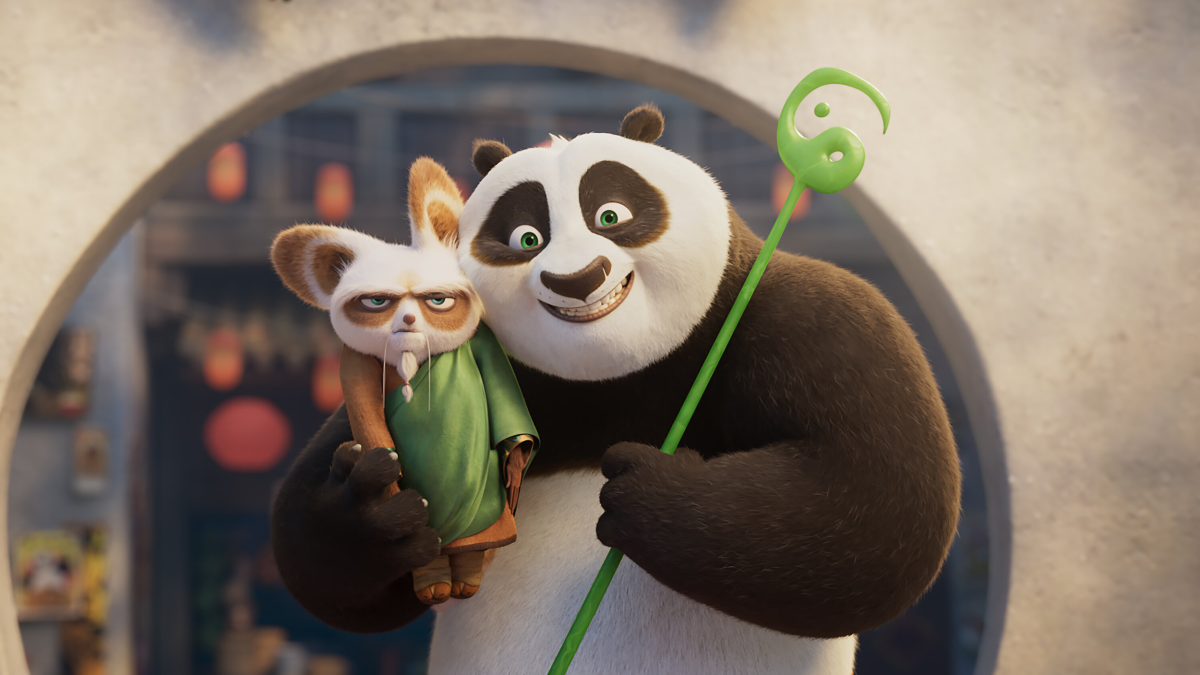Eighteen years after the first film kicked its way into theaters, the fourth installment of the “Kung Fu Panda” franchise, titled “Kung Fu Panda 4,” was released on March 8. Right from the get-go, “Kung Fu Panda 4” stepped away from its dependency on the star-studded martial arts group the Furious Five. Instead, the film gave its titular protagonist Po (voiced by Jack Black) a new task: hanging up his hat and becoming the spiritual mentor to the next Dragon Warrior.
This duty is quickly interrupted by the sinister plots of the Chameleon (Viola Davis), a magic-wielder looking to steal the kung fu skills from past kung fu masters and take over the surrounding cities and villages.
Along the way, Po is joined on his quest to stop the Chameleon by Zhen, a trickster fox (Awkwafina) and his two fathers, the goose Ping (James Hong) and the panda Li Shan (Bryan Cranston). Another notable returning character is Master Shifu (Dustin Hoffman).
It was difficult to judge expectations for the film, considering most of this generation has been with the franchise since the first movie came out in 2008. The loss of the Furious Five, who appeared in this film only as cameos, felt like it could signify the end of the franchise’s long reign as a classic animated series.
Despite the challenge of impressing a die-hard audience, “Kung Fu Panda 4” was able to successfully pass the mantle on from the legacy of that dynamic group of martial artists and allow Po to stand mostly on his own as the protagonist of the series. With a unique sidekick in Zhen, a thief and an outsider to the Valley of Peace, the film allowed Po and company to grow beyond the limits of the previous movies and expand into a wider understanding of the Kung Fu-niverse with a trek to a new location and new host of obstacles.
Though Zhen’s character seemed easily readable as a shifty, back-stabbing archetype at the beginning, through heartfelt (though not profound) bonding, the movie was able to successfully subvert the expectations of even the most suspicious audience-goers. As a result, the climatic confrontations between Po, Zhen and the Chameleon shocked viewers while still earning their narrative weight.
Knowing that the audience is familiar with the intimidating prowess of villains of old, returning cameos by past villains Tai Lung (Ian McShane), Lord Shen (Gary Oldman) and Kai (J.K. Simmons) provided high stakes to the Chameleon’s insidious goal of harnessing their power without overshadowing the true arcs of the actual protagonists.
Of course, the “Kung Fu Panda” franchise wouldn’t be complete without an iconic score. Reprisals of the franchise’s most famous piece, “Oogway Ascends,” helped to center the audience in its musical voice, while a clever instrumental spin-off of “Crazy Train” rewarded those who were paying even closer attention to the score with a fun treat during a chase scene.
The only major critique is that “Kung Fu Panda 4” struggles to adapt animals to a human-like society without delving into stereotyping. “Zootopia” is similar example of this shortcoming. The most glaring flaw is that characters admit to having trouble telling Po and his father, Li Shan, apart simply because they are both pandas.
Overall, the film attacks (and conquers) some of the hardest questions for franchises lately: how to pay tribute to a faithful fan base while passing the narrative baton on to a new generation. “Kung Fu Panda 4” is aided in its success by improved animation technology helping the copious amounts of fight scenes pack a visual and comedic punch, as well as a new sense of maturity in a franchise that has always leaned heavily toward its humor.







